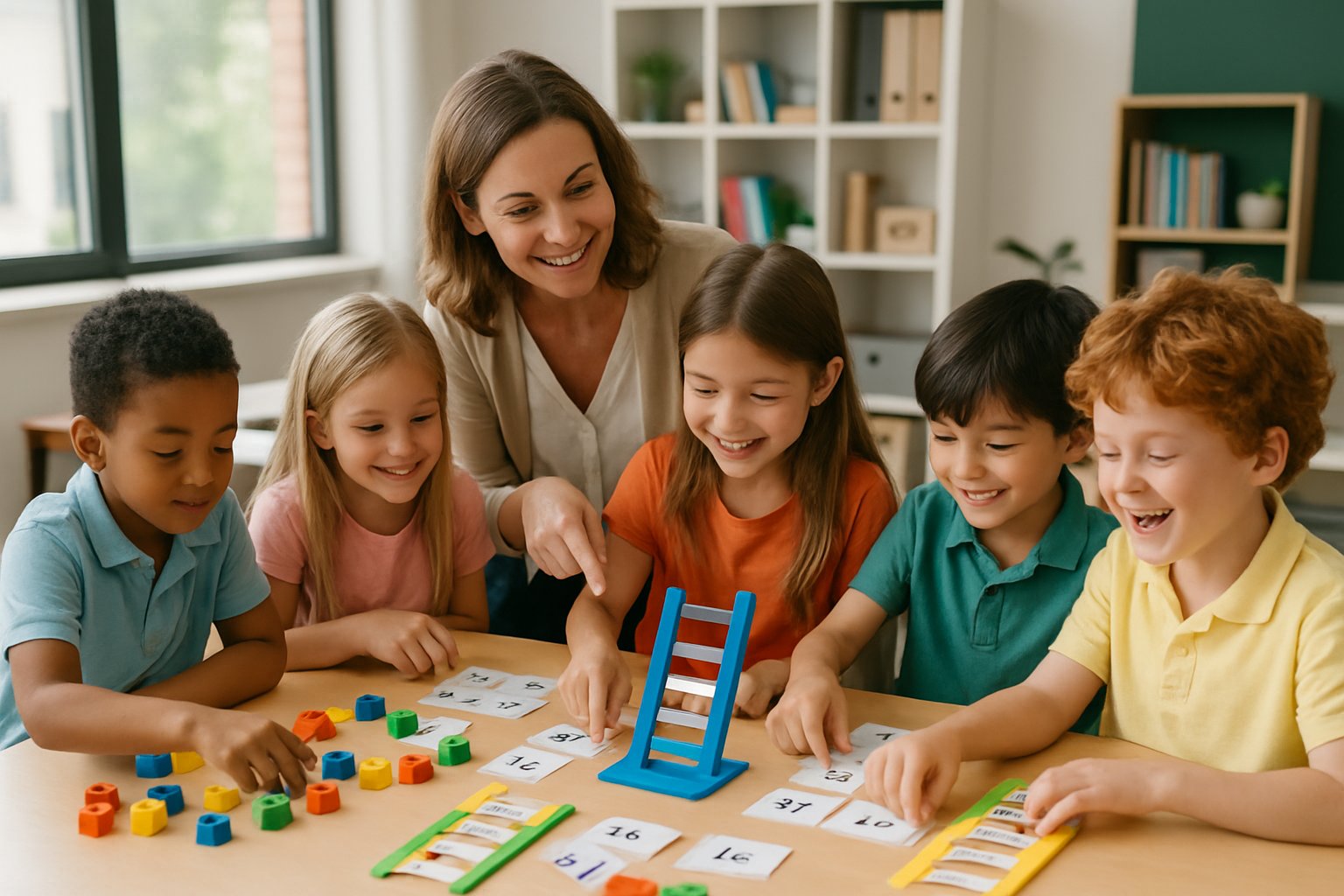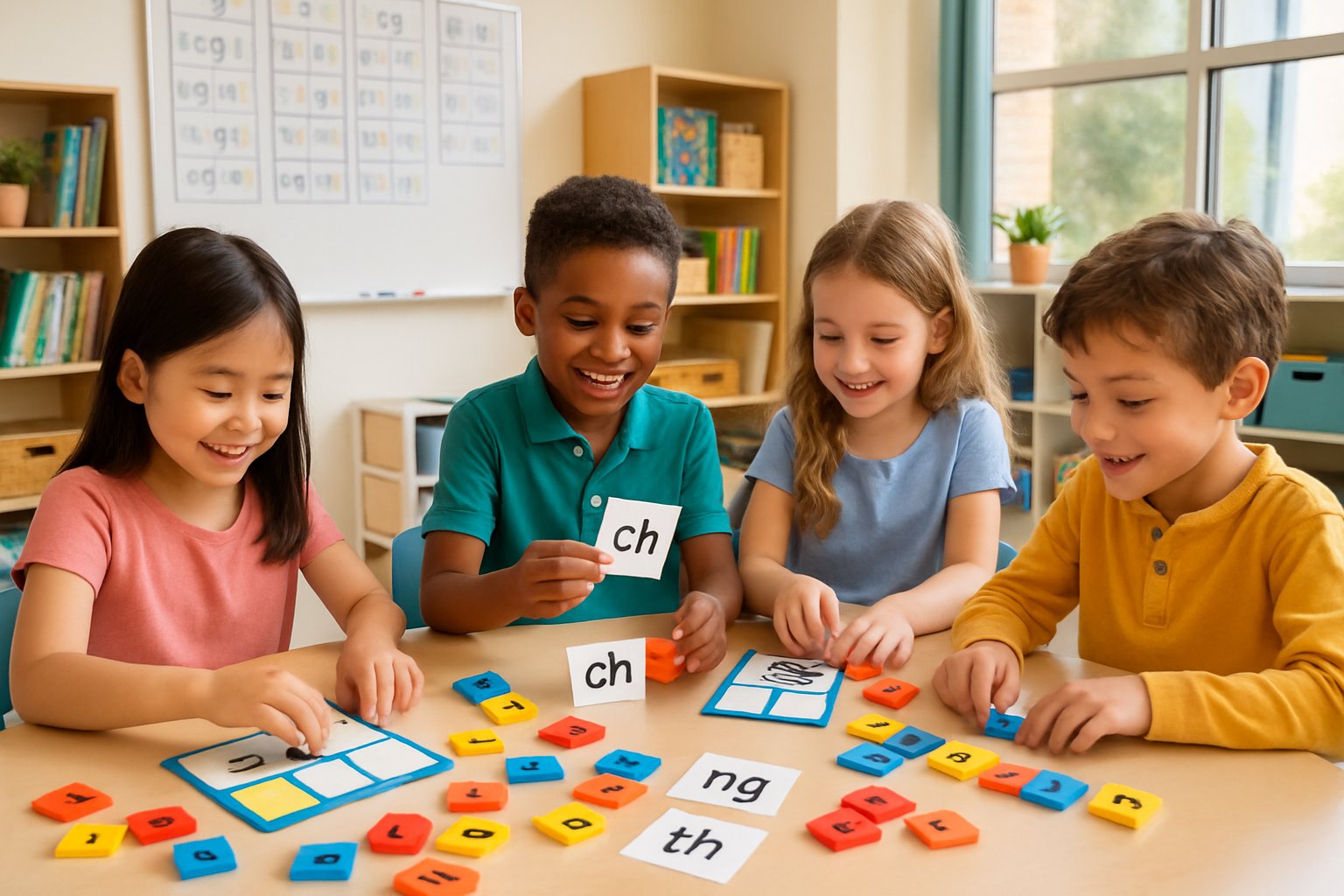Essential Strategies for Hands-On Blend Ladder Practice

Successful blend ladder practice requires specific tools and methods that engage multiple senses and make abstract concepts concrete. These strategies focus on physical manipulation, visual organization, and creative word-building activities.
Multi-Sensory Tools and Letter Tiles for Building Blends
Letter tiles provide the foundation for effective hands-on blending practice. Students can physically move and arrange these tiles to create different consonant blends.
Teachers can use magnetic letters on whiteboards or plastic tiles on desks. Students slide the tiles together while saying each sound aloud. This connects the physical movement with the auditory experience.
Recommended letter tile activities:
- Building bl, cl, fl, gl, pl, and sl combinations
- Creating tr, dr, br, cr, fr, and gr blends
- Forming st, sp, sc, sk, and sm patterns
Hands-on elements added to blend activities make learning more engaging and effective. Students can also practice blending sounds using puppets or small toys.
Textured letters add another sensory layer. Students trace sandpaper letters while saying the sounds. This helps cement the connection between visual, tactile, and auditory learning.
Blending Sound Boxes and Object-Based Activities
Sound boxes break down blending into manageable parts. Students place one sound in each box, then blend them together smoothly.
Teachers draw three boxes on paper or use physical containers. Students move objects like buttons or coins into each box while saying the corresponding sound.
For the word “flag,” students place one object in the first box while saying “fl.” They put another object in the second box for the “a” sound. The final object goes in the third box for the “g” sound.
Sound box progression:
- Say each sound separately
- Blend the first two sounds together
- Add the final sound to complete the word
Activities using toy cars or small objects help students practice L-blend and R-blend combinations. Students place toys on flashcards showing bl, cl, fl, and other blends.
Incorporating Word Chains and Word Ladders Creatively
Word chains help students see patterns between similar words. Students change one letter at a time to create new words with the same blend.
Starting with “stop,” students might create: stop → step → stem → stem. Each change maintains the consonant blend while introducing new sounds.
The two main goals when using blend ladders focus on teaching short vowel sounds and showing that vowels are important parts of words. Students should always start by saying the vowel sounds first.
Teachers can create physical ladders using poster board. Students climb up and down by reading each word aloud. This adds movement to the learning process.
Creative word ladder variations:
- Seasonal themes: Use words related to holidays or weather
- Story connections: Build ladders using words from favorite books
- Student names: Create ladders starting with classmates’ names
Word chains work especially well with common blends like st, tr, and bl. Students can build long chains showing multiple word families.
Games, Centers, and Engaging Activities for Blend Mastery
Board games with blend cards create competitive learning environments that motivate students to practice decoding skills. Movement-based activities help kinesthetic learners master phonics skills through physical engagement.
Phonics Board Games and Blend Ladders
Simple Board Game Setup
Teachers can create blend board games using cardboard and dice. Students roll dice and move game pieces to spaces with different blends.
Each space requires players to say a word with that specific blend. For example, landing on “st” means saying “stop” or “star.”
Bingo with Blends
Bingo games using blend cards work well for whole class activities. Teachers call out blends while students mark pictures or words on their cards.
The first student to complete a line wins. This game reinforces reading skills through repetitive practice.
Spinner Games
Blend spinner activities let students spin to land on different consonant blends. They must quickly say words that start with their chosen blend.
Teachers can add time limits to increase difficulty. This builds automatic recognition of phonics patterns.
Interactive Literacy Centers and Group Challenges
Hands-On Center Rotations
Literacy centers with hands-on activities keep students engaged during independent work time. Centers can include puzzles, clip cards, and building activities.
Students rotate through different stations every 15-20 minutes. Each center focuses on specific blend patterns like L-blends or R-blends.
Digital Learning Stations
Digital blend activities provide interactive practice with immediate feedback. Students use tablets or computers to complete blend games and quizzes.
These tools track student progress automatically. Teachers can see which students need extra help with specific blends.
Collaborative Challenges
Small groups work together on blend relay races. Teams compete to match pictures with correct blend cards as quickly as possible.
This builds decoding skills through peer support. Students help each other learn difficult blend patterns.
Movement Activities and Kinesthetic Blending
Robot Talk Practice
Robot talk activities have students pretend to be robots while saying blend words. They separate each sound before blending them together.
For “clap,” students say “c-l-ap” then blend to form the complete word. This builds phonemic awareness through physical movement.
Blend Relay Races
Students run to piles of blend cards and grab the correct one for displayed pictures. If they see a tree, they must find the “tr” blend card.
These activities combine physical exercise with reading practice. Movement helps students remember blend patterns better.
Seasonal Sorting Games
Leaf sorting activities have students sort leaves with blends onto matching trees. This connects science of reading principles with seasonal themes.
Students can sort by L-blends, R-blends, or S-blends. The tactile experience helps reinforce learning through multiple senses.
Creative Extensions to Deepen Blending and Digraph Skills

Building stronger phonics foundations requires moving beyond basic blends into more complex word structures. Teachers can combine CVC patterns with blend practice while introducing digraphs through tactile activities that reinforce sound-letter connections.
Integrating CVC and CVCC Words in Blend Routines
Students benefit from connecting familiar CVC words to new blend patterns. This approach builds confidence while expanding their decoding skills.
Teachers can start with known CVC words like “cat” and “hat.” Then they add beginning blends to create “flat” and “chat.” This progression helps students see patterns clearly.
Word Building Progressions:
- CVC: cat → CCVC: scat
- CVC: lip → CCVC: clip
- CVC: top → CCVC: stop
Physical manipulatives make this practice engaging. Students can use letter tiles to transform words step by step. They slide blend tiles in front of CVC words they already know.
CVCC words add ending blends to familiar patterns. Students practice “hand,” “camp,” and “milk” to build fluency. These hands-on blending activities help students master complex sounds through creative games.
Teachers can create word ladders that move from simple to complex. Students climb each step by adding or changing blend sounds.
Exploring Digraphs Alongside Blends with Hands-On Practice
Digraphs require different teaching strategies than blends because two letters make one sound. Students need engaging digraph activities to understand this concept fully.
Movement games work well for digraph practice. Students can freeze when they hear digraph sounds or hop to different stations labeled with “sh,” “ch,” and “th.”
Digraph vs. Blend Practice:
- Digraphs: ship, chat, thin (two letters, one sound)
- Blends: slip, flat, trim (hear both letter sounds)
Sorting activities help students distinguish between blends and digraphs. They can use picture cards or word cards in different containers. This visual separation clarifies the concepts.
Students enjoy mystery bag games with digraph objects. They feel items like shells, brushes, or toy whales. Then they identify the digraph sound in each object’s name.
Interactive notebooks let students collect digraph words and pictures. They can create personal reference books with examples they find meaningful.
Leave a Reply